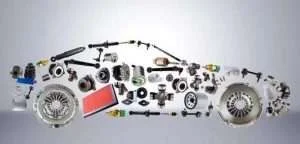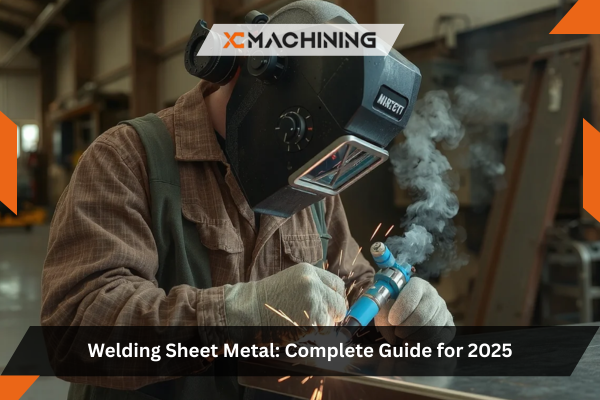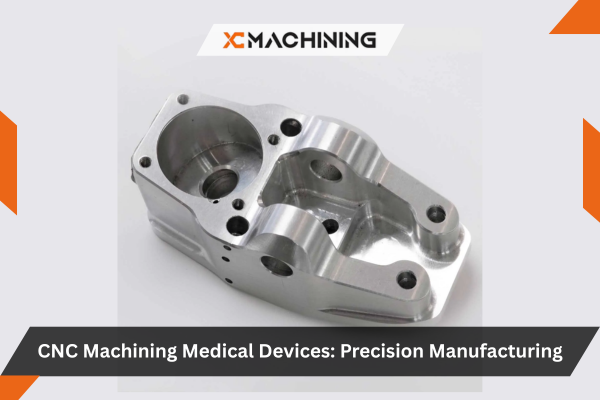Since the revolution of the CNC machining in the automotive industry by Henry Ford in 1913, when he started using an assembly line in the production of automobiles, the industry has continued to evolve. To remain competitive, automotive manufacturing companies must continue to be inventive in the products or parts they produce. This has made automotive manufacturing companies adopt the use of CNC machining.
CNC automotive machining facilitates the quick production of sophisticated parts. This enables auto parts manufacturers to expand their automobile products due to the speed and precision of the process. In this article, we provide in-depth information about CNC automotive machining, its benefits, and applications in the automotive industry.

What is CNC Automotive Machining?
CNC Automotive machining is a production method that employs computer-controlled equipment to cut, mold, and automotive parts precisely. Also, this process can make intricate shapes out of materials like plastic or metal.
Cutting, milling, turning, drilling, grinding, and routing are just a few of the operations that fall under the umbrella of CNC machining in the automotive industry. Additionally, CNC prototype machining guarantee high levels of uniformity, accuracy, and dependability by obeying pre-programmed instructions.
Benefits of Using CNC machining in the automotive industry
CNC machining has gained popularity in the automotive sector in recent years due to its numerous benefits. The following are some benefits of CNC machining in the automotive industry.
High Repeatability
CNC Machining in automotive industry guarantees repeatability because it is a computer-controlled process. Repeatability is essential to ensure consistency between batches of parts in the automobile sector. All CNC automobiles produced in this manner will meet the same standards.
Custom Parts
The automotive industry produces customized parts with the aid of CNC machining in the automotive industry. CNC fixture facilitates the production of these parts in a shorter time, regardless of production scale, whether small production volumes or one-off production.

Minimal Human Interference
Automation is a feature of CNC machining that enables auto manufacturers to produce parts without human intervention. It is, therefore, simpler for producers to concentrate on inventions and design. Because of the producers’ emphasis on design and innovation, CNC machining in the automotive industry parts offer better looks and functionalities.
Reduced Setup Time and Lead time
Reduce setup and lead times effectively by CNC machining vehicle components. Compared to traditional machining methods, 5-axis CNC machining can be accomplished in a single setup, eliminating the need for several setups and reducing lead times.
Increased Accuracy and Reduced Scrap
In keeping with repeatability, CNC machining in automotive industry also produces parts with precise tolerances. This trustworthy technique can adhere to the necessary tolerances for the engine and other functioning components, which is very useful for automotive applications. As a result, when the production process is complete, you can be guaranteed to receive precision-machined car parts.
Additionally, this higher manufacturing precision makes error almost non-existent, consequently reducing the tendency for product rework or rejection and CNC machining costs.
What Automotive Parts are Manufactured Using CNC Machining?
CNC machining in the automotive industry facilitates the production of several CNC machining inautomotive industry parts in addition to its various prototype uses. These parts include:
Cylinder Heads, Engine Block, and Intake Manifold

The core parts of a car’s internal combustion engine are the engine block, intake manifold, and cylinder head. However, because these parts need various metal alloys, manufacturers often struggle to develop a good machining technique due to their different material requirements.
For this reason, manufacturers now rely on CNC machining in the automotive industry to produce these parts because of its compatibility with a wide range of materials.
Car Interior Panels
Modern cars’ performance is significantly influenced by their lightweight design. Today, many automakers produce interior and roof panels from polymers, wood, and plastics rather than steel. These kinds of panels can be twice as dense as comparable steel panels, although significantly lighter.
Panels often have a complex design, as they have must-have spaces that fit indicators like speedometers, radios, indicator lights, fuel gauges, etc. This design complexity makes CNC machining in the automotive industry the ideal process for making interior panels.
Gearboxes

Modern gearboxes are compact and demand precise tolerances, making producing extremely difficult. A little manufacturing fault could result in gear wear, misalignment, failure, and other challenges.
Automotive firms are increasingly using precision CNC machining in the automotive industry to replace conventional gear-making techniques. Thus, they can swiftly produce high-quality gears using this precision machining method without further post-processing.
Drive Axles
A constant speed joint connects the two half axles of a car’s driving axle to a particular wheel. The crucial component allows the wheel assembly to move vertically freely when turning a car. Precision automotive components like the bevel gears and hypoid gears used in the drive axle system are made possible thanks to CNC machining.
Custom Vintage Car Parts
Vintage automobiles are still quite popular. Nevertheless, one often needs to restore certain components, such as engines, interiors, and exhaust systems. And since most of these parts are no longer being produced by the makers, it further complicates issues.
Hence, manufacturers use CNC machining in the automotive industry and reverse engineering to make these special parts. Starting with obsolete parts, 3D CAD models of the part are made. Afterward, these models are translated by the CNC aluminum machining device and used to produce the custom parts.

Electrical Components
Several automobile electrical and electronic parts, including connectors, sensor housings, indicator cluster parts, and control module enclosures, are made using CNC machining. Precision dimensions and complex features required for electrical connection and component integration are ensured by CNC machining.
Brake System Components
The production of several brake system parts, including brake calipers, rotors, brackets, and master cylinders, involves CNC machining in the automotive industry. These components must be precisely machined to guarantee dependable and efficient braking performance, ensuring safety and responsiveness.
Lighting
Materials used in automotive lighting, such as acrylic glass and PMMA, can be worked with using CNC machining in the automotive industry. As a result, the technique is compatible with lighting components like headlights and interior illumination. However, extra surface treatments like grinding and polishing are recommended for better visual appeal.
Different CNC Machining Techniques Used in Automotive Part Manufacturing
Different CNC machining techniques are used for making different parts of an automobile. These techniques include:

CNC Drilling
Precision hole-making in automotive components is made possible by CNC drilling. It is essential for making engine pistons, brake discs, and other parts that call for precise hole placement. Reliable automobile parts are produced due to the CNC machining magnesium process, which guarantees consistency and eliminates the possibility of manual errors.

CNC Milling
The automotive machining industry uses the CNC machining in the automotive industry technique more often. During this process, a rotating cutting tool removes material from the workpiece, resulting in complex geometries and unique properties. The automotive industry makes engine blocks, cylinder heads, and gearbox components using CNC milling, ensuring accurate dimensions and smooth surfaces.
CNC Turning
Another essential CNC technique is turning, which involves rotating a workpiece while a cutting tool efficiently removes material to create perfect cylindrical shapes. Axles, shafts, and other rotating vehicle components are frequently produced using this method. High accuracy and reliability provided by CNC turning ensures the best performance of the finished items.
CNC Grinding
CNC grinding provides higher surface finishes and precise tolerances on CNC machining in the automotive industry parts. Precision gears, crankshafts, and camshafts are examples of the components that use this technology. The effectiveness of automobile parts depends on their long-term reliability and durability, which are improved through CNC grinding.
Innovations of CNC Machining in the Automotive Industry
Although vehicle parts manufacturing operates under the same fundamental tenet, innovation remains constant. This is apparent in the ongoing adoption of novel ideas and innovation in the design and manufacturing of CNC automotive parts. Below are the innovations in CNC machining automotive manufacturing.

Autonomous Cars
Autonomous vehicles can sense their surroundings without human intervention. This requires that the electrical and mechanical parts of cars have the best possible aesthetic and quality of operation. Due to its reliability, accuracy, and tight tolerance when producing such components, CNC machining in the automotive industry parts machining is significant in this context.
Material Performance
The lighter the car, the faster it is. This has made many manufacturers of automobile components create lighter cars using a variety of approaches for better and more effective performance. For instance, most manufacturers today produce parts from lightweight materials like aluminum.
Due to their great machinability, these materials have replaced conventional materials and are suitable for CNC machining in the automotive industry.
Use of Artificial Intelligence
Since CNC machines operate nonstop, they may produce difficult-to-find flaws. The flaws may lower their output. Incorporating Artificial intelligence has enabled CNC machines to become more adaptive and intelligent.
Using intelligent systems during CNC machining in the automotive industry can increase productivity, decrease downtime, and enhance quality by detecting tool wear. This also makes it easier to adjust operating parameters and make decisions about preventative maintenance.
Advanced Tooling
CNC machining is developing with the development of new tooling and cutting methods. Tool life, cutting speeds, and surface finish quality will improve through improved geometries, tool coatings, and materials. High-speed, multi-axis, and responsive machining techniques are increasingly developing to increase the productivity and quality of intricate automobile parts.
CNC vs. 3D Printing for Automotive Applications
Automotive parts made using CNC machines are distinct from those made by 3D printers. Besides, CNC is a subtractive technique as it makes automotive parts by removing material from a solid workpiece. Contrarily, 3D printing is an additive technique that gradually adds new material to an existing one.
It is possible to produce automotive parts like interior panels with either technique. While CNC machining in the automotive industry panels are reliable and may be made of various materials, 3D-printed panels offer a fresh option. 3D printing technology is ideally suited to producing smaller quantities and parts with complex geometries.
However, 3D printing car parts are currently only suitable for testing and validation. On the other hand, CNC machining is suitable for processing middle quantities of complex automotive parts. These parts can be used not only for testing but also for end products.
So, which manufacturing process is best for your automotive parts production? The manufacturing process you should choose depends on the automotive part being produced and its application.
Get CNC Machining Automotive Parts at XinCheng Machining
XinCheng is a professional CNC machining company. Our machining capabilities include 3, 4, and 5-axis machining. We also provide various materials for your automotive production, including steel, plastics, titanium, and aluminum alloys.
From CNC prototype machining to high-volume production, we can fulfill most automotive parts production requests thanks to our fully equipped CNC machining in automotive industry shop. So contact us today to produce your automotive components.
Conclusion
CNC machining is frequently used in the prototype and manufacturing of components for the automotive industry. Automotive OEMs worldwide are developing new strategies to maximize the use of this process to provide customers and end consumers with products of the highest caliber.
CNC machining in the automotive industry are developing to be more productive, perform self-diagnostic tests, demonstrate improved machinability, be compatible with a wider range of materials, and do much more. By doing this, they are raising the bar for their automotive applications. For most manufacturing-intensive operations within this industry, the automation and reduced lead times of CNC machining make it more lucrative.
FAQs
How can one ensure the precision and accuracy of CNC machined auto parts?
Uses quality control tools like CMMs to guarantee that our components meet standards. While utilizing the recent tools and technology, our CNC machined spare parts also undergo rigorous quality control procedures to ensure that final products meet your expectations.
What are the common materials used in automotive CNC machining?
Metal and plastic are both acceptable materials for different automotive sections. However, metal is a good choice for making parts such as cylinder blocks, seat rails, hinges, brackets, body panels, etc., because the highly conductive metal heads effectively remove a lot of heat from the combustion chamber. On the other hand, plastics are ideal for making suspension insulators, bumpers, seats, headrests, etc.
What kind of CNC machine is used for making automotive parts?
Many different types of CNC machines may be used to produce simple auto components. However, 5-axis machining machines are typically needed for complicated components like blocks. This offers a far wider variety of cutting tool angles. Additionally, it makes it possible to machine intricate geometries with precise tolerances





